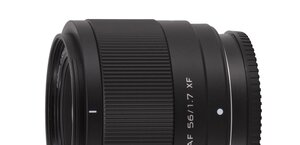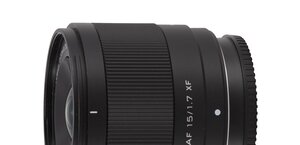Panasonic Lumix G 12-60 mm f/3.5-5.6 ASPH. POWER O.I.S.
3. Build quality and image stabilization
In the photo below the Panasonic Lumix G 12–60 mm f/3.5–5.6 ASPH. POWER O.I.S. is positioned next to the Sigma 17–50 mm f/2.8 EX DC OS HSM.
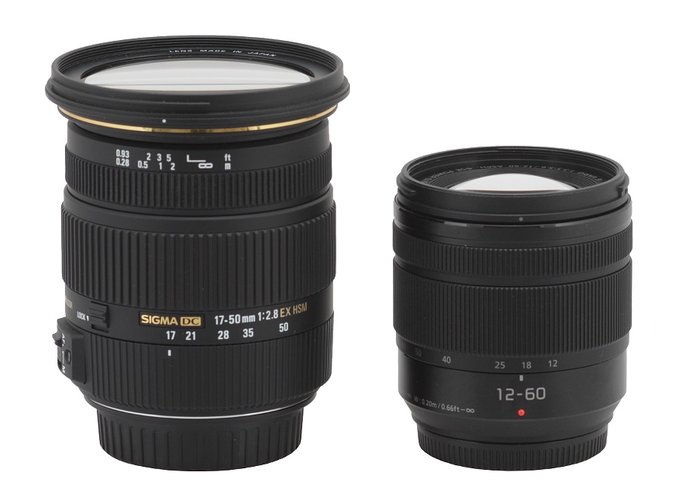 |
Please Support UsIf you enjoy our reviews and articles, and you want us to continue our work please, support our website by donating through PayPal. The funds are going to be used for paying our editorial team, renting servers, and equipping our testing studio; only that way we will be able to continue providing you interesting content for free. |
- - - - - - - - - - - - - - - - - - - - - - - - - - - - - - - - - - - - - - - - - - - - - - - -
The tested lens starts with a metal mount which surrounds a plastic bottom and contacts joined to it. The mount also features a serial number of the lens and information that it was produced in China. A rear element is situated on the same level as the contacts and its diameter is quite significant, amounting to 23 mm. It doesn’t move so the lens remains perfectly sealed from this side.
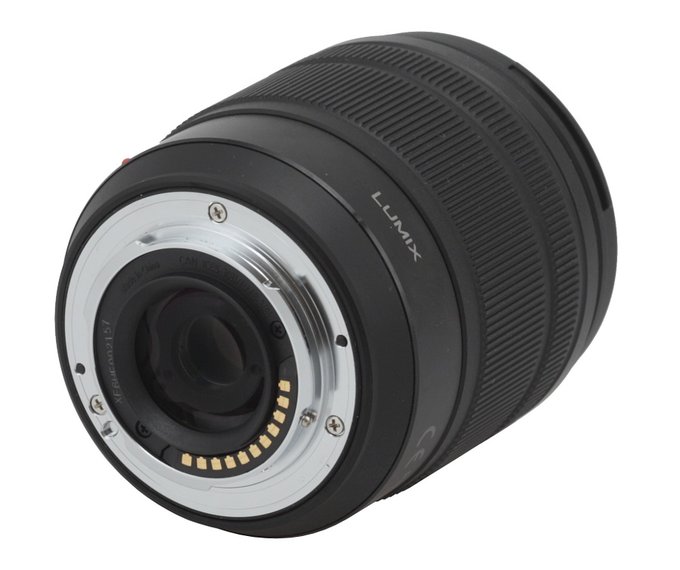 |
The proper body of the lens starts with a black, metal ring which features the name of the lens, its parameters, a red dot making an alignment with a camera easier and the working range of the focusing mechanism (T: 0.25m/0.82ft–∞ W: 0.20m/0.66ft–∞).
A zoom ring is the next part of the lens. It is as wide as 24 mm and covered by ribs pleasing to the touch; under the ribs you see focal lengths marks at 12, 18, 25, 40, 50 and 60 mm. The ring’s performance is quite even but in the middle of the range the resistance is a bit lower than on both ends.
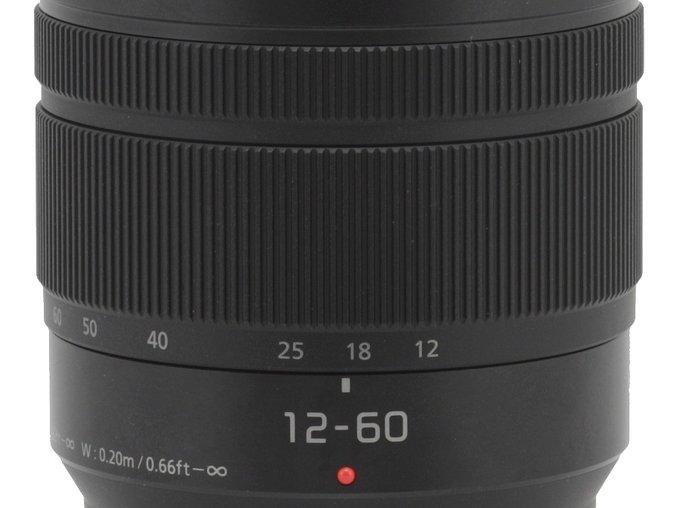 |
Further on there is a manual focus ring, a focus-by-wire construction, as wide as 11 mm and covered by ribs. Running through the focal scale depends on the speed of the turning. If you turn the ring fast you reach about 180 degrees; if you turn it slower the scale becomes noticeably bigger than 360 degrees. Such a wide turning angle allows you very precise settings and additionally you are helped by a display window showing a magnified part of the image you set the focus for.
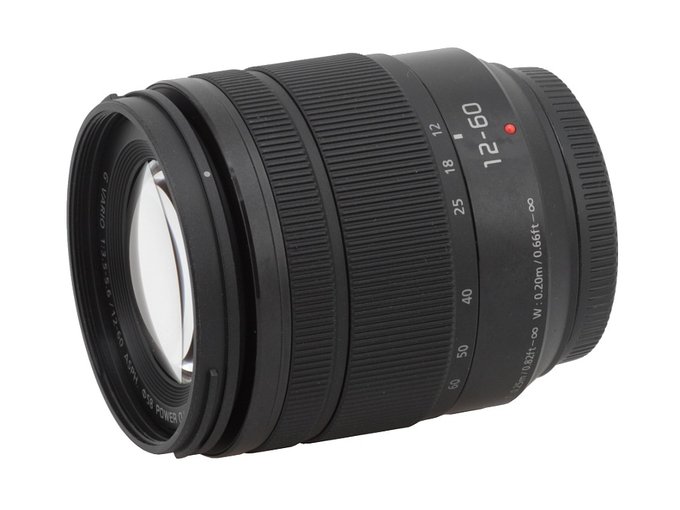 |
The lens ends with a black, metal ring from which sticks out a front element system, supported by a plastic tube. The front element system is able to increase the length of the lens by 3.5 cm. It’s worth adding that the tube is the most extended at 60 mm and it is hidden the deepest not by 12 mm but by about 20 mm.
The front element is a bit convex, with a diameter of 39 mm. It is surrounded by an inscription with the name and the parameters of the lens, a non-rotating filter thread, 58 mm in diameter, and a hood mount.
 |
The optical construction features 11 elements positioned in 9 groups. Three of them are aspherical and one is made of low dispersion ED glass. Inside you also find an aperture with seven blades which can be closed down to f/22 at the maximum.
Buyers get in the box both caps, a petal-type hood and a soft pouch for the lens.
 |
Image stabilization
The optical stabilization test of the Panasonic 12-60 mm we conducted at the 60 mm focal length with the lens being attached to the Panasonic G7. We took several dozen photos with the stabilization switched on and off for exposure times ranging from 1/125 to 1/3 of a second; then we determined a percentage of blurry photos and presented it in a form of a time exposure function expressed in EV (with 0 EV corresponding to 1/100 of a second). An appropriate graph with the results is presented below.
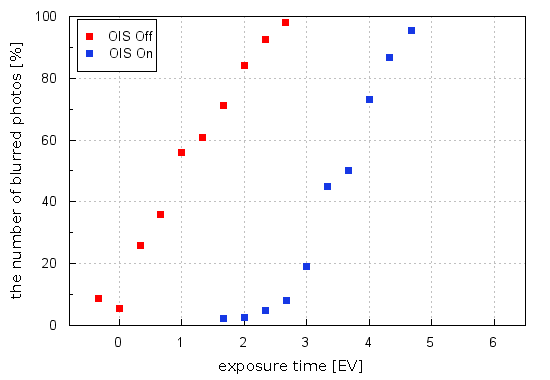
The maximum distance between both curves reaches 2.8 EV and such is, in our opinion, the real efficiency of the stabilization unit. It is a decent result but nothing more. Top-of-the-range stabilized lenses can have stabilization as efficient as 4-4.5 EV.




